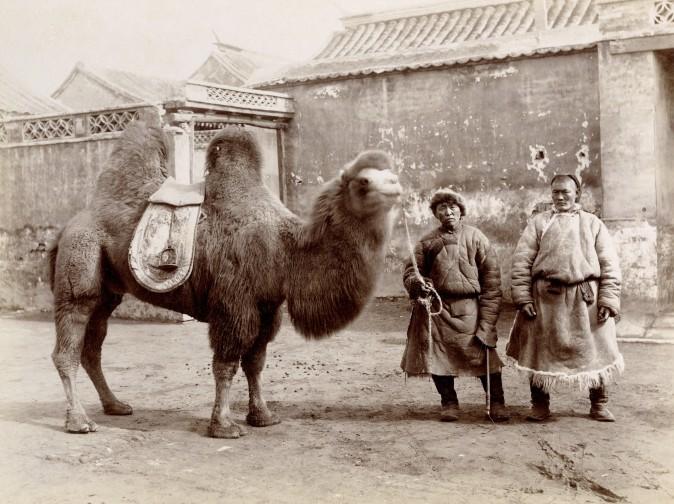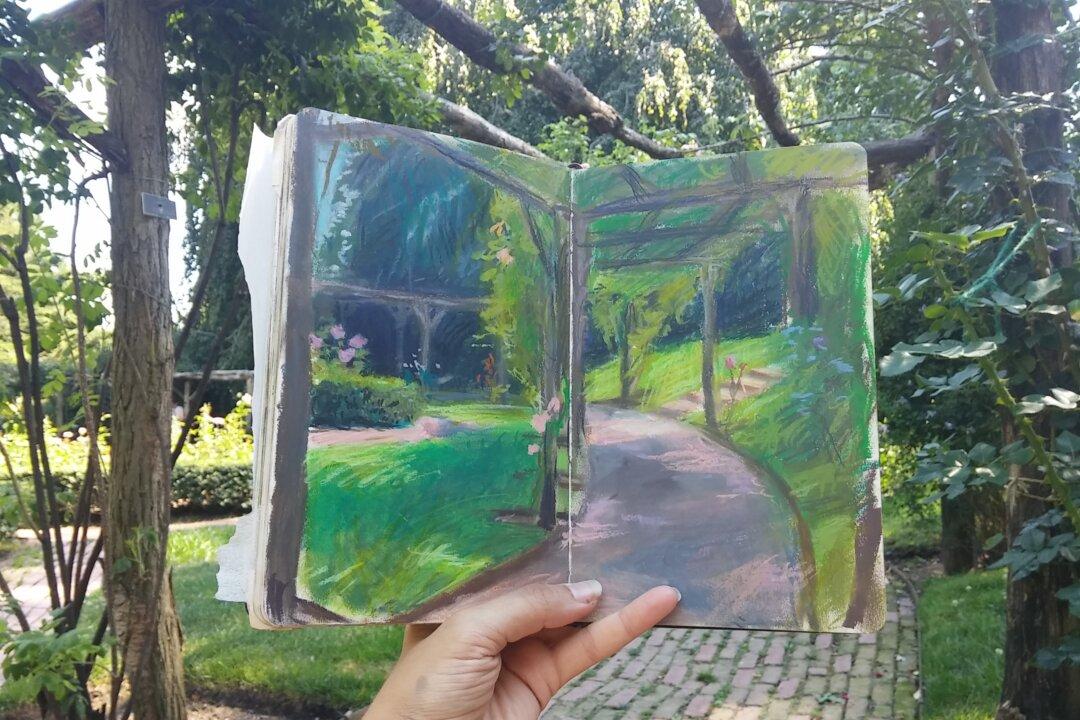NEW YORK—Two men clad in leather and fur stand side by side with their legs wide and firmly planted on the ground, next to a Bactrian camel. All three stare straight at the camera. You meet their gaze, transcending time and place.
The world has changed so fast of late. We forget it was only about 150 years ago that photographers started to capture images, such as of these two tough and weathered men, traveling the Silk Road with a rather cheerful-looking, two-humped camel. You can start to imagine the trials and tribulations they must have faced carrying goods from perhaps as far as the Mediterranean.
The photograph was taken around 1890 by Sanshichiro Yamamoto, a Japanese photographer who established his second photographic studio in Beijing. It is one of 15,000 photographs in Stephan Loewentheil’s private collection of early Chinese photography.







